gwynnegiles.partial.gallery
Toronto, Ontario, Canada
In this series, we get to know the Artists behind the work with ten questions about their practice, their space, and their ideas. These are their Stories.
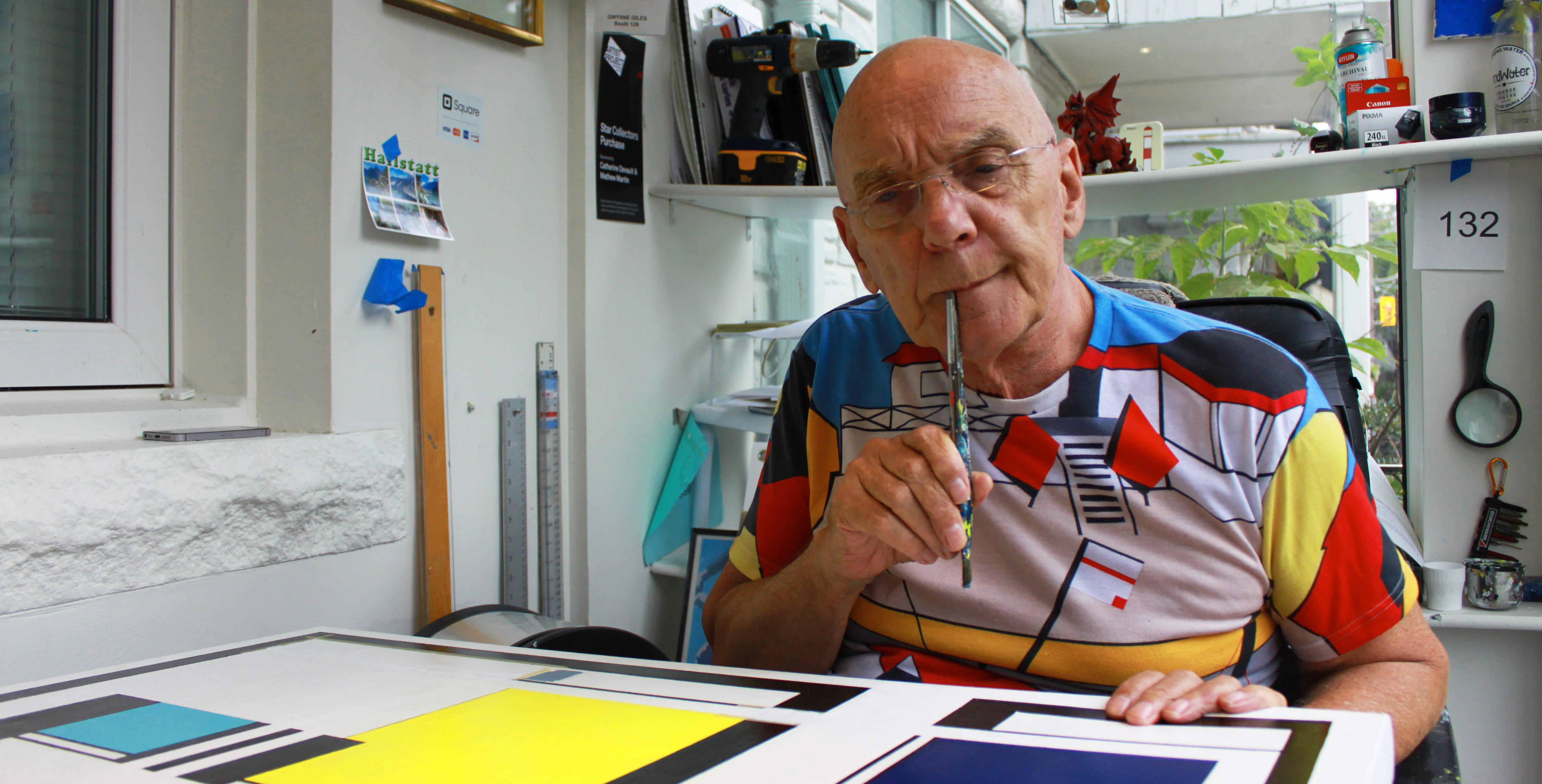
Canadian artist Gwynne Giles is of Anglo-Welsh ancestry who came from an academic background but began painting when he retired from a successful career in the hospitality industry. He has lived in the Beaches in Toronto for 35 years and is “as happy as a pig in muck”. With no formal training in art, his ideas are at times quirky but always original. His work has been described by collectors as ‘something new and completely different’.
The evolution of his portfolio clearly nods to his de Stijl roots that have since morphed into three different styles and expressions of his art. Gwynne loves all of them equally and, as he puts it, has no idea where the inspiration for each came from (although he really does like painting nuns and lighthouses)? We sat down with Gwynne to learn more.
How did you start painting?
10 years ago I went to art Toronto with a friend and when we were walking around we came to one exhibit that had really cool precise paintings I looked at it and said I could do that and decided then and there to paint. I have no idea why!! The first six months were dreadful as I have no art training and you find out things as you go along. I wanted to paint abstract art but just did not have the technique.
Why do you create art?
It allows me to use all of my faculties and expression without any boundaries. When I paint feel complete.

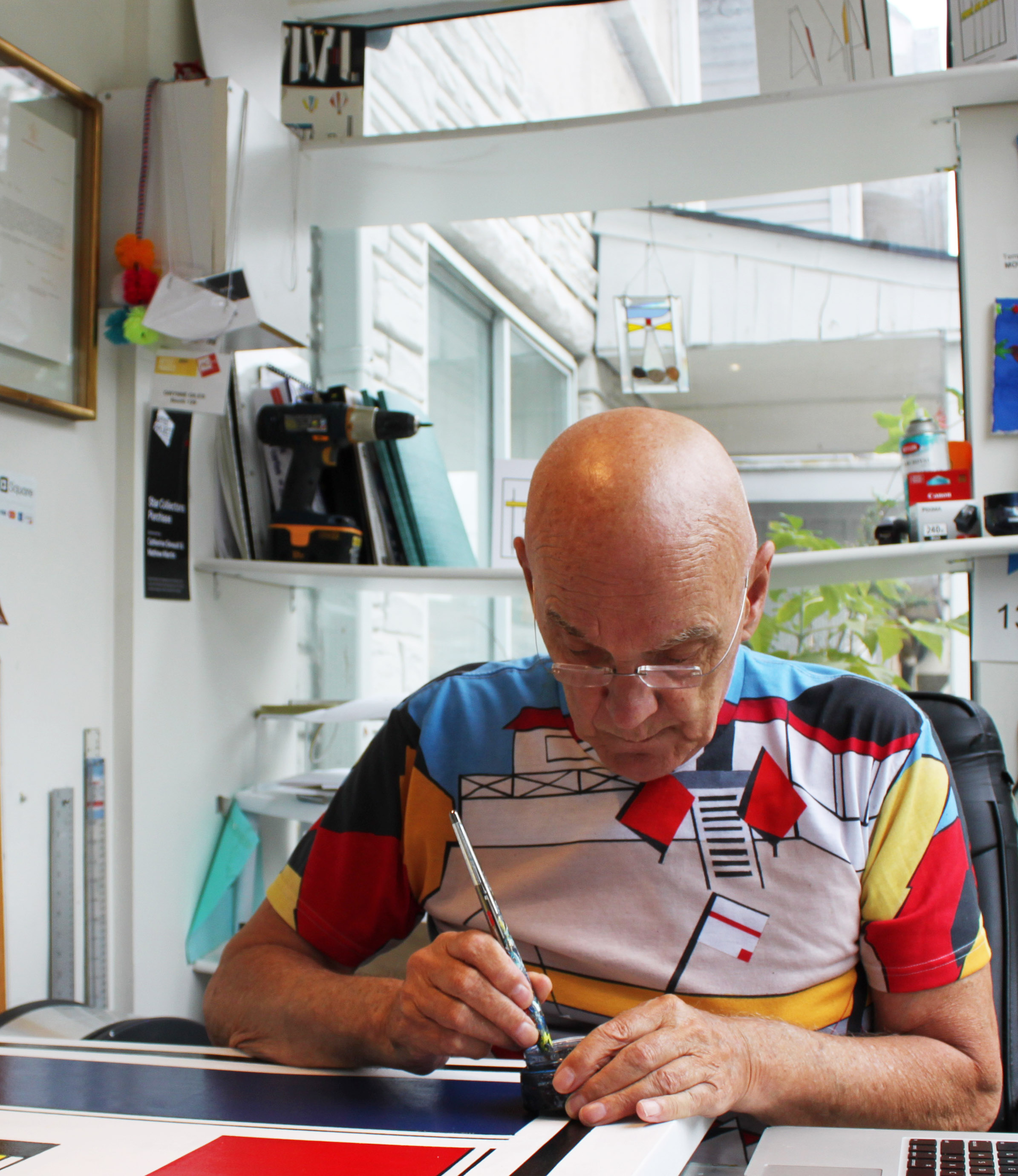
What is your art process, how do you begin?
First I have to decide which style of painting I am going to do next – Abstract and Cold paintings each take a month but a Large figurative painting takes 2 months or even longer.
The next step is small sketches – perhaps as many as 30 – some have colour – some do not. When you are starting an abstract piece you are principally trying to express the idea – not colour – nor finish. Then I create a drawing 15cm x 18cm which is in scale to the final size of the piece (30 x 36in) – this stage is primarily about colour and how things are going to fit. There might be as many as 6 drawings before it starts to look right.
Then on a very stiff card, I then transfer the best drawing elements into a 15in x 18in fully finish painting. There are lots of changes going on here but you get a really good idea of where things are going. Because it is on a card you cannot get the colours really right – but that doesn’t worry me. Even on final painting shades of colour take great refinement.
When I am happy with this I put the cardboard piece aside and begin the early process again. When I have 3 or 4 cardboard pieces that are dry and finished I pick one and paint it. The canvas has to be prepared and sealed with varnish. I exactly copy the drawing onto the canvas, at the same time making very small refinements – moving a line 1/2in here or extending a colour panel down an inch. When the drawing is completely finished it is varnished so that I can create clarity when I paint my shapes and lines in.I then paint in all the coloured parts of the piece and varnishing each as it is finished. This creates the crisp straight lines and finishes that I like. This can take several days – sometimes longer.Black is next and always the finalcolour. The painting starts to come alive and have its own personality. I do 6 – 12 coats of varnish then create the final that I am looking for. It is quite a laborious process but it gives me the results that I want. I now paint in three styles –
- Abstract: Stockholm ‘series paintings.
- Large figurative paintings: based on my earlier work and style – ‘Remember last summer’
- Cold paintings: this is new to me – I want the person viewing the art to feel they are in a frigid cold place. Like the Arctic Circle -see ‘Nairn’ and ‘Bay Street
I have no idea how each style evolved – they just did on their own.
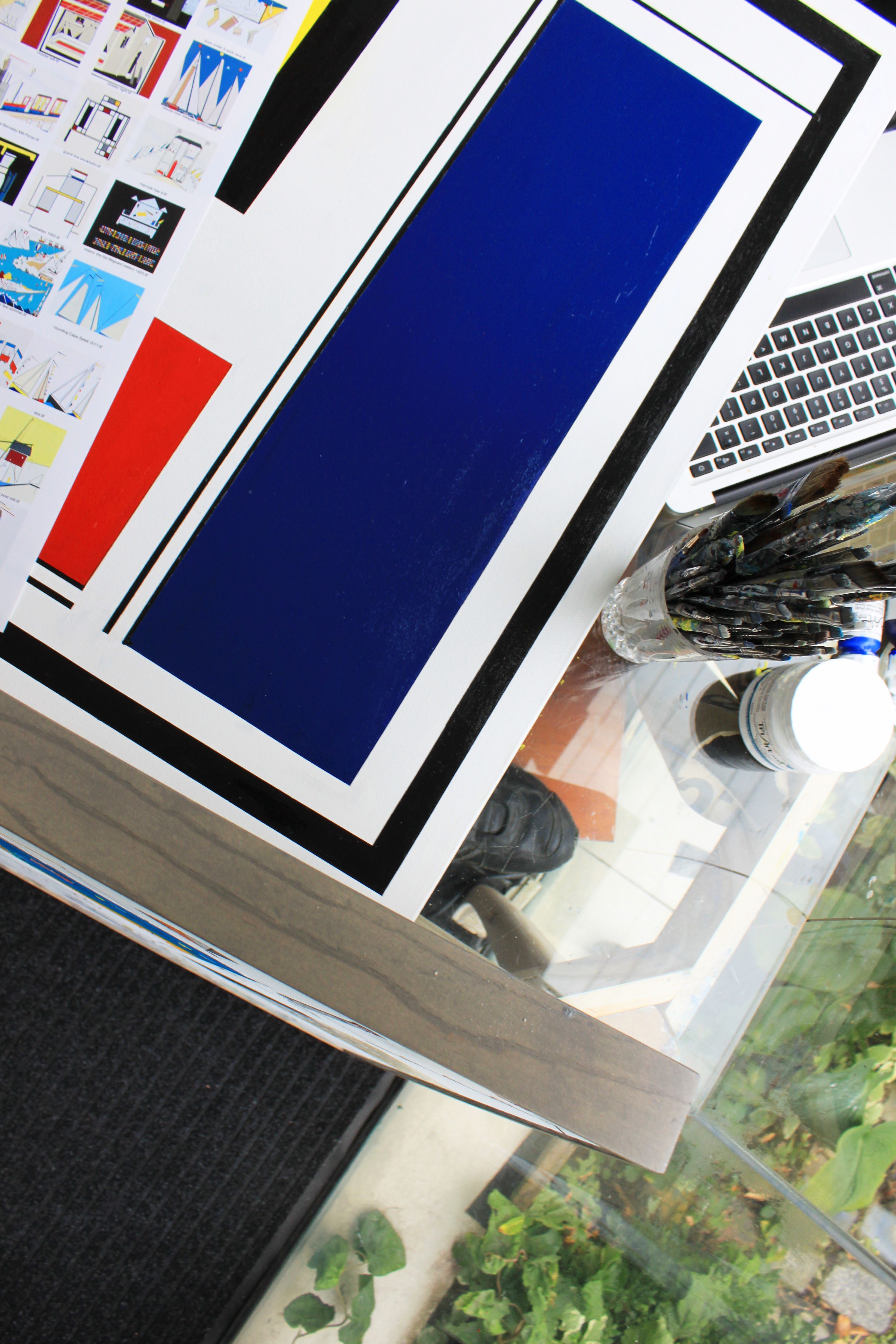
What inspires you to create your art pieces? What do you want your art to express?
What I want to express in each piece is clarity. Sometimes I want humour or the viewer to have the feeling of an icy landscape. I want every piece to be two-dimensional and flat – without any depth. I am asked why that is important to me and I don’t know what to say. That is how I like my art to look – so it is just floating along in a very happy place.
Do you ever have a moment when you find it difficult to create art?
Creating art has never been difficult for me. When I was starting, executing pieces was difficult because I lacked technique. Ideas have always just flowed non-stop it is corralling them into a cogent idea that takes a lot of thought. When I paint I move into a different world that is very fulfilling and I lose track of time.
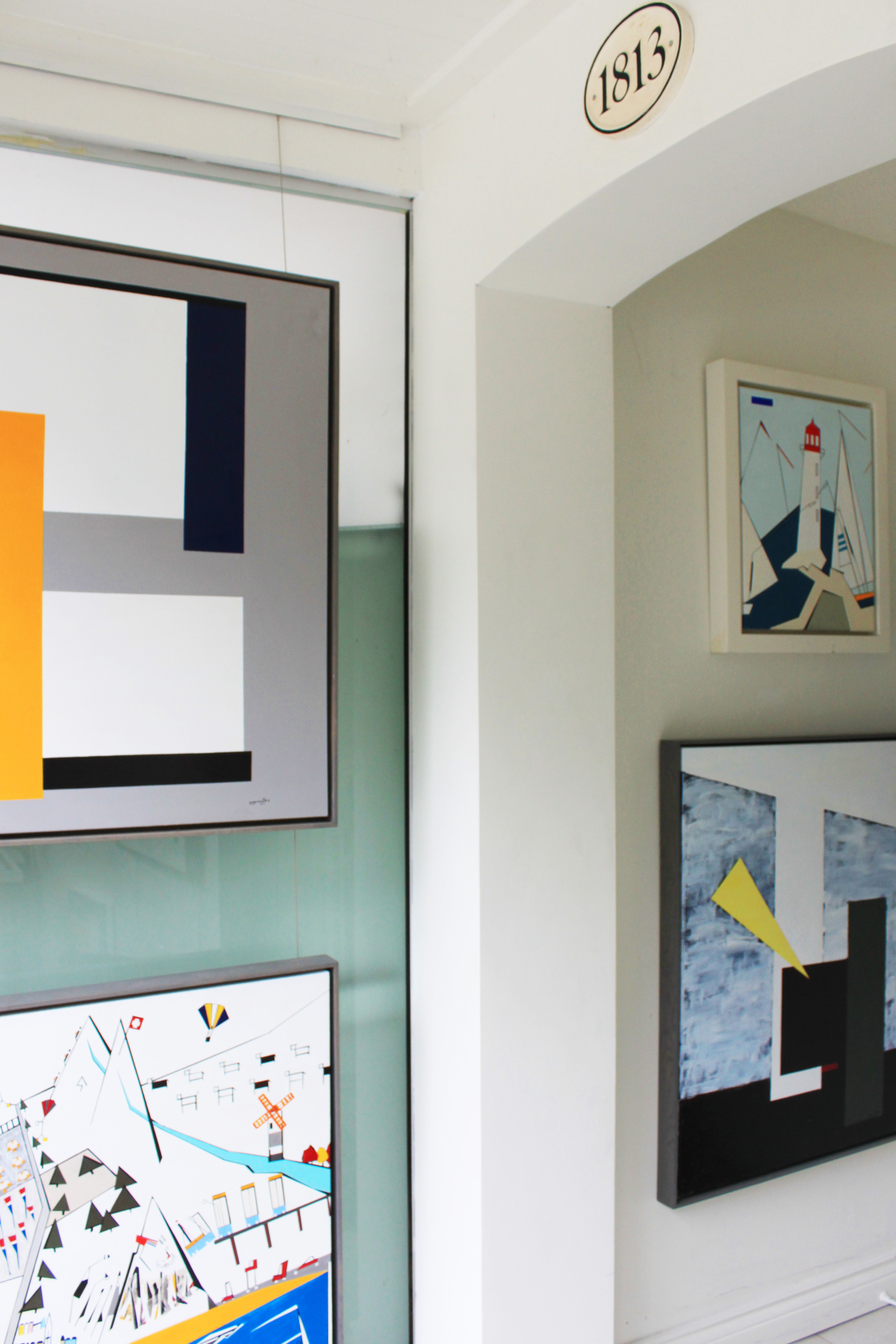
Are you ever unhappy with an art piece you have created?
This is very rare because of the stages that I go through. When I am at the ‘cardboard’ stage – see above – you quickly see what work. When I was four or so years into my career abstraction was still very difficult but if you practice long enough your ideas start to make sense.
What are your favourite supplies to use for creating new art?
I like Tri-art paint because of the thickness – and I like to make my own varnish using dux and gambol products. I can often use 40 Flat head brushes in one session so I buy really inexpensive ones. I have tried using canvas, wood, and metal to paint on. Due to my technique only fine canvas works for me.
Have you ever tried using different mediums to create your art?
Yes, I have – oil paint was a disaster as it takes so long to dry. Turned out to be a sticky mess. Watercolour is no good because of the even flatness that I want. I did think of trying encaustic finishes but they are not flat enough.
If art was never part of your life, where would you be?
A very difficult question. Earlier in life, I was an academic in the Geography field – especially medieval historical geography – that is where I would return if I did not have art.
How do you spend your time when you’re not creating artwork?
I like movies – the outdoors – visiting my family – drinking Champagne with friends and reading……….lots of books.
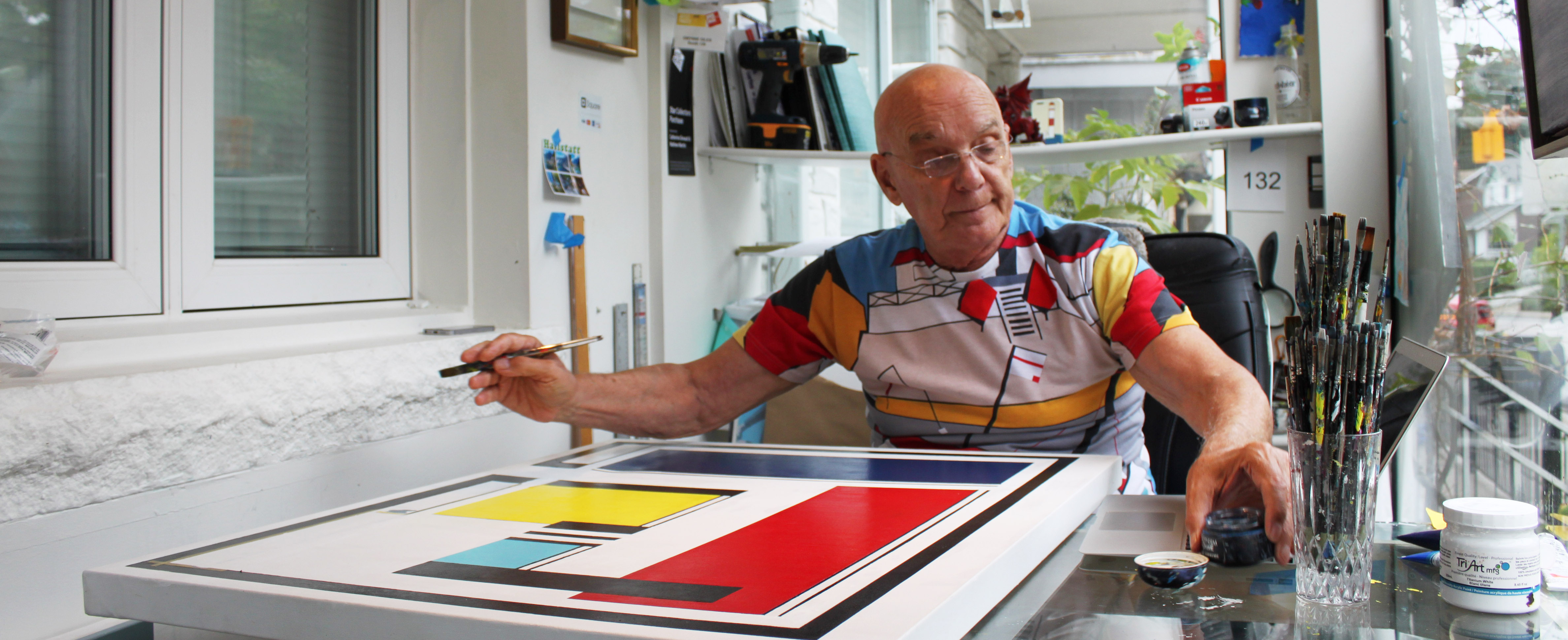
Shop Now Gwynne Giles’s Work
Do you want to be featured? Join Partial as an artist and e-mail us at hello@partial.gallery. We’d love to share your work.